“Dan, I have to tell you, I am a little anxious.” Dan Zimmerman and I were on our way to Asymmetric Solutions, a firm that provides combat and tactical training to military, police and now civilians. We had been invited down to their huge facility about an hour south of St. Louis and agreed to visit.
OK, ‘agreed’ is WAY too mild a word — we jumped at the chance to pack up our guns, a few hundred rounds and get the nickel tour. “I was not a particularly good soldier.” I confessed. “Never really liked PT, my shoes were not always polished to a high shine…” Dan shrugged, “What are you getting at?”
“I just hope these guys aren’t the gun world equivalent of jocks…the kind of guys who would call an overweight middle aged guy ‘snack cake’ or something. You know, douchebags.” Dan laughed. “Paul seems to get along with them just fine — how bad can they be?”
A fair point. Paul McCain had arranged for our visit and he was tooling down the highway in his car a few lengths ahead. Paul was the guy who I’d met at the Arnold Rifle and Pistol Club who graciously introduced my grandson to the SCAR and the TAVOR.
We passed Mineral Area College indicating that we were closing in on Farmington, Missouri, a mineral rich slice of the Show Me State. Asymmetric Solutions is on 2600 acres of land in St. Francois county. We pulled up to the gate, and were greeted with large signs warning passersby of the shooting and blowing up that takes place there.
The first thing you see when arriving is a ring of shipping containers that encircle a large barn. Two of the shipping containers are arranged on their end creating a tower with a ladder reaching to the top, where a guardrail awaits. I learn later that the setup is designed like a forward operating base and the tower is in fact is used for command and control of the range, and occasionally as a sniper’s perch.
We were greeted by Grady Powell, a gregarious young man who is the head civilian instructor at Asymmetric. Grady is a former Green Beret who served in Africa and Iraq. We learn that Grady has recently returned victorious from the NBC reality show, “Stars Earn Their Stripes.” The show featured military vets teamed with celebrities. Chris Kyle, the famous American sniper, was on the show. Grady and Chris were very good friends.
We exchange greetings, a few other young men offer to grab gear and we head up to the barn to meet the rest of the team.
Inside the barn we walk past a front-end loader, and then into a staging area of sorts with shelves and workbenches. There were five or six other guys milling around, though nobody seems to be idle. We introduced ourselves and shook hands. Each man was polite and courteous, almost to a fault. Many of them were prior service (something that vets call each other rather than ‘veteran’), almost all of them have done work for the Department of Defense. They carry with them that polite patina that a good warrior presents to the public.
The cook’s tour of the facility doesn’t take too long. AS has all the amenities one would need for a military team visiting for an extended stay – but not much more. The bunks, showers, classrooms, the radio shack – all are spartan, function over form. It creates an atmosphere of seriousness of purpose. As we file into the classroom, John, the managing principal at Asymmetric, explains the kind of training they offer.
“Units come here because of the freedom to train that we allow.”
“What do you mean by that?” I asked.
“At other facilities, other ranges, you may not be able to engage outside of a very narrow zone.” John holds out his arms in a ‘V’. “At one military facility, the unit couldn’t shoot from their vehicle, which defeats the purpose of, you know, training to shoot from your vehicle.”
Everyone laughed. I ask, “What is the terrain like around here?”
One of the men pipes up “Terrible!”
“Do you mean it’s rocky, rough, wooded…?”
“No, just terrible. It’s hilly and there are rocks strewn everywhere, it will beat the hell out of you. It is a great place to train.”
The property was once used by folks to drive off-road vehicles, sand rails and such. It’s full of bumps and gullies, strewn with rocks and cut by creeks. In the distance is a very high bluff, an unusual feature in Missouri. This bluff is the second highest in the state, bested only by Taum Sauk mountain. Beyond that ridge lay 900 more acres. That’s when it dawned on me just how big the place is.
John explained that while he has plenty of business from government entities, they hope to expand and attract more civilians to train there. They offer basic concealed carry courses as well as progressively more advanced training for, well, anyone.
We left the inner compound and walked a few hundred feet away to their ‘shoot house’. It’s set up to be about the size of a large suburban ranch home. Walls vary in composition from thick dirt and gravel-filled bunker walls to walls made only of building wrapper. These walls are backed by a berm just a handful of yards away. Replacing a wall full of holes is simple and relatively inexpensive. In a few weeks, they will complete work to expand the size of the shoot house, making it the fourth largest in the U.S.
Earlier, I had helped John and his colleagues set up a det cord breaching charge. I confessed at that time to being an Army Engineer.
“Were you a blow shit up Engineer, or a build shit engineer?” one of the young men asked.
I worked in Ft. Leonard Wood’s quarry and asphalt course. I blew up rocks to build stuff. I decide to lead with the former. “Blow shit up.” The man grins in appreciation. “Good to go.”
Let me pause a minute and explain why I am not naming names. The men who work at Asymmetric prefer their quiet lives, and as a matter of protocol asked that I not use their names.
Paul, Dan and I are looking forward to the demonstration of a “field expedient” breaching charge. We set up a few cameras to record the event and step back as John initiates the time fuse. I am kind of relieved. In the 25 years since I was an engineer, the fuse, blasting cap and det cord arrangements have not changed.
Normally, blowing a door off its hinges is done using an electrical blasting cap, but given the expense of the caps we are using the less expensive timed fuse. It seems like a very long time before…
“KAW WHAM!”
In spite of my preparation, I was startled by the explosion and the door flew away into the room. Splinters fluttered to the ground. I declared to nobody in particular, “It is impossible to maintain a bad mood while blowing shit up.”
All who heard me grinned and nodded.
We inspected the damage. The door had been neatly separated from its hinges. My footage shows the door jumping off the hinge and dropping a few inches to the left, ready for the breach team to simply kick it aside. I was surprised the door didn’t become a missile, but then when I consider the physics – all the force was on one side of the door – it just makes sense.
We continued the shoot house tour, and were offered a block of instruction on using a pistol for self defense. I have my beloved Carmen, a Smith and Wesson compact .40 caliber M&P. Dan was packing an old school .45.
John and his associates showed us how to carry the firearm at a low ready for movement. He demonstrated presenting the firearm to engage a target, then return to a ready position. My Galco King Tuck holster is not particularly well suited to the draw he showed us since my spare tire is in the way of the relatively small grip. His team were all carrying full size firearms in OWB rigs. Most of them were carry their guns on thick padded gunbelts.
John then ran us through instructions for “clearing” a building, particularly how to engage around corners. He first demonstrated how to stay back and slowly “slice the pie” allowing the defender to see a threat first, then rapidly engage. It was awkward at first. Even though I shoot IDPA from time to time, this method of caution over speed is strange. You have to almost bend your torso in a “C” shape, then slowly crab-step as your field of vision changes, giving you a view of the uncleared room a small slice at a time. Main lesson: they do it wrong in the movies.
A few of John’s colleagues jumped up onto the catwalk above the shoot house. From there they exercised safety control and monitored us amateurs as they would the professionals. Dan, Paul were ready for a few live shoot maneuvers. The team had put up friendly and threat targets in several rooms, cleverly using spray cement and slapping up copy paper withe smiley and frowned faces. There wass a certain disturbing air about it for some reason. Maybe it was the fact that something as serious as a home intruder is boiled down to a simple emoticon, and the only difference between friend or foe is the direction of a curve.
The scenario was that we had heard the sound of a break in, and from the master bedroom we had to clear our home, first with a pistol, then with the CQB weapon of our choice.
Dan does an efficient job with his .45. His marksmanship is good. I got nervous, since I’m being watched by professionals, and thanks to my big mouth, they knew I am prior service. I desperately didn’t want to whiff. Or shoot anyone by accident.
Into the first hallway, I slowly sliced the pie. A the moment I saw the first sliver of the threat, I step out and rang the steel target with two shots. “Get a move on, you have to clear the rest of the house – your kids are in those other rooms!” I heard from John. I deliberately moved to the rest of the house. In the first room, I saw the spray-painted purple frowny face of the threat target, and punched two deliberate holes in it, and enter the room more or less the way they showed me, first clearing the corner, then moving from that “power corner” into the rest of the small room.
While my marksmanship is good, John offers that my movements were too slow. Still, he’s patient and pleasant. His critiques were offered in the true spirit of learning.
The run-through with my AK-47 was faster without my missing any targets or blasting one of my “kids”. John was following me a few steps behind. As I turn to complete clearing a room, I realized he was on the other side of the wall, and kept my weapon angled down. There was no target to shoot, but I didn’t want to muzzle anyone. John saw me and looked like he was about to tell me to halt, when I pointed the weapon down. We are at the end of the exercise.
I had never done a live-fire exercise quite like that and I can tell you that it was a great experience. Most of us “train” by going to a range and shooting down what is effectively a hallway. However, our homes are not hallways, at least not most of them. It was sobering to learn about how coming through a doorway, backlit, essentially makes you a silhouette target and an easy mark. Part of the work of learning how to clear a house is how to zip through a doorway and minimize your profile while doing it.
Outside the shoot house, there was an impromptu shooting gallery. In the distance were steel targets. Paul whipped out his SCAR and took some potshots, ringing the gong. I asked permission to shoot and was told to “go right ahead.” I whiffed the first few and the staff member next to me began calling out instructions.
“High.”
BANG
“Still high”
BANG
“I think you are zeroed for 100 yards. Try aiming at the belly”
BANG DONG
“Hit”
BANG DONG
“Hit”
I was largely pleased with being able to ring a gong at that distance with iron sights standing off-hand. I fired off a few more rounds, ringing the steel.
While Asymmetric Solutions isn’t casual about safety, they are casual about shooting. Just the fact that we could toss a few rounds downrange at some of the targets mounted there at the spur of the moment was a much appreciated change of pace from other ranges. I am sure had there been anyone else on the range, it would have been different. My point is that the range was a tool, not a fiefdom over which one exerted power. All of the staff, lead by John and Grady, were open and willing to share what they had and what they knew.
“Why did you start Asymmetric Solutions in the first place?” I asked.
“All of us are either prior service, or worked with the Department of Defense as contractors. After a while you get tired of all the travel, and all the time away from home. We wanted a business where we could be home with family and still do what we do.” Grady responded.
We piled into a golf cart-sized off road vehicle and headed to a spot over yonder. A car sat, derelict, facing a series of metal targets. We pulled up behind the junker and John told us about the shooting scenario.
“This is an ambush. You are to engage these targets…” John indicates the two steel plates on the right of the driver. “…through the windshield.”
“Really?” I asked, imagining myself covered in glass shards.
“Yeah – don’t worry, all the glass blows out.” John clearly has answered this objection before.
I loaded up my .40 cal and got into the car. It was a Chevy Cavalier Z24, a sporty relic from the 90s, though in Farmington it may have been a working vehicle only a few months ago. Despite what John said, there was some glass in the seats, but at that point I was unwilling to object in front the guys.
The windshield is full of holes, but you could still make out targets through the murky, milky glass. Then I was given the go signal. I blasted through the windshield at the first target. Wearing only foam earplugs, the sound was very loud, but not deafening. I had a stoppage, and was pleased with myself that even as someone was yelling “dead man’s gun” I quickly cleared it and continued to fire. The target dropped and I shot the next one.
Turning to my left, I shot the target outside the driver’s door, and it dropped on the first strike. Then I had to roll my fat ass out of the car which was low-slung to begin with, and lower still while sitting on blocks. I ungracefully scrambled out and up, taking up a defensive position behind the trunk. I engaged the final four targets. My marksmanship was excellent – seven targets, seven hits.
To my surprise, wasn’t covered in glass. Later I learned that the glass I saw on the seats was from folks shooting into the car (when it was unoccupied, of course).
After Dan and Paul did a round, I decided to try again with my pocket carry firearm, the Diamondback DB9. Still only wearing foam earplugs, the tiny niney was deafening when I blast through the windshield. It took four shots to sink two targets. Again I rolled out of the car that time a bit more gracefully, and make my way to the back. I have only one round left by the time I get to the last two targets. I leave at least one tango standing.
My new friends do not leave me hanging, somebody yells “covering” draws and hammers the last threat for me after I shout that I am empty. It actually feels good to know someone had my back, even though it was just training.
To my surprise, there is some interest in lil’ Debbie, the six plus one pocket nine I just fired. A few of the guys, including Paul, scare up some 9mm and take her for a spin. They agree it is a handful, and I can say in this scenario, having the larger firearm is a lot better.
While I do not ever expect to have to breach a door, it was certainly fun to watch. On the other hand, the training in drawing and handling a firearm in combat was very meaningful. One morning I was awoken to my wife screaming that there was an intruder down in the basement. It turns out some items had fallen over, and while I carefully checked things out – armed – I can see where I could have been far more effective and safe. Many folks buy a gun, and once they pass their concealed carry class, never spend any time at the range with it, much less get advanced training.
On one hand, thousands of citizens defend themselves with a firearm every year without taking a great deal of training. That says a great deal all by itself. I think there is a profound social benefit to simply having armed citizens in the field. Even with active suppression of defensive firearms use by the media, I believe it is dawning on the criminal element that their work environment is far less safe. On the other hand, I think a citizen who has the means ought to be as proficient as possible.
Asymmetric Solutions wants to see more civilians learn how to handle their firearms effectively. They offer many classes in shooting, from pistol to carbines – even hunting and precision rifle. You can spend a lot getting trained. To take Tactical Pistol course one through three can cost over 900 bucks plus the price of ammo. That’s a nice gun and then some. That said, the words of Jeff Cooper (peace be upon him) float to my mind. “Beware the man with one gun – he can probably use it.”
Citizens who choose to exercise their second amendment rights ought to get the best training and experience they can. Here in the Midwest, Asymmetric Solutions offers training from very qualified men who are both skilled with weapons and tactics and patient trainers. Lots of people are good with guns, far fewer have the skill needed to teach. To take the training they offer is to become a proficient and capable defender with a firearm. I look forward to making that investment in the not too distant future. I anticipate that I will become more like that man with one gun.

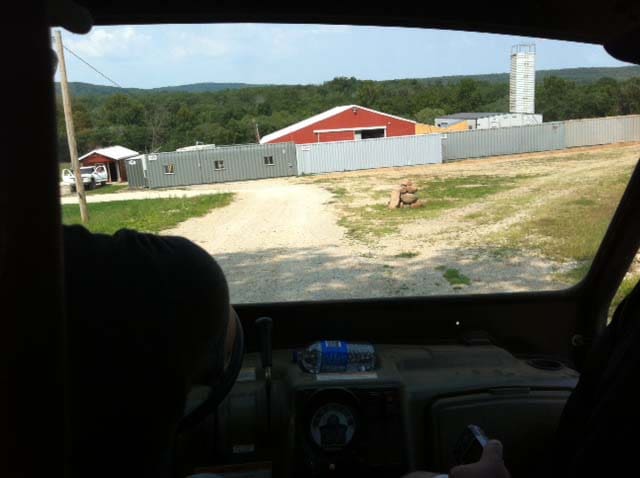
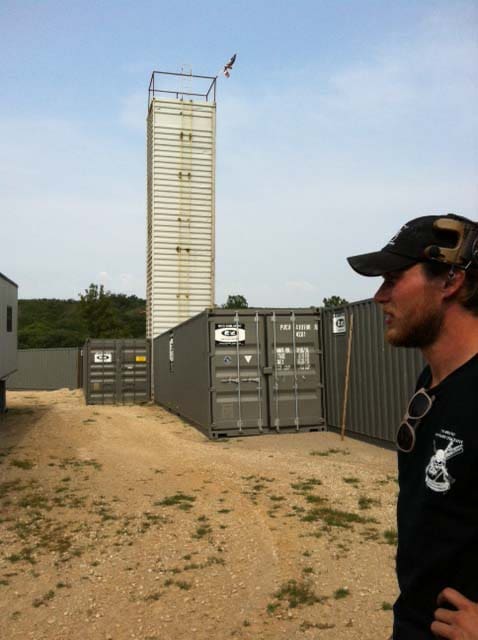
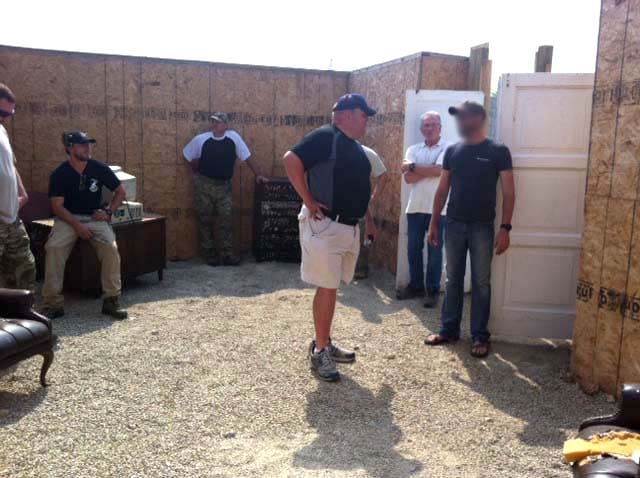
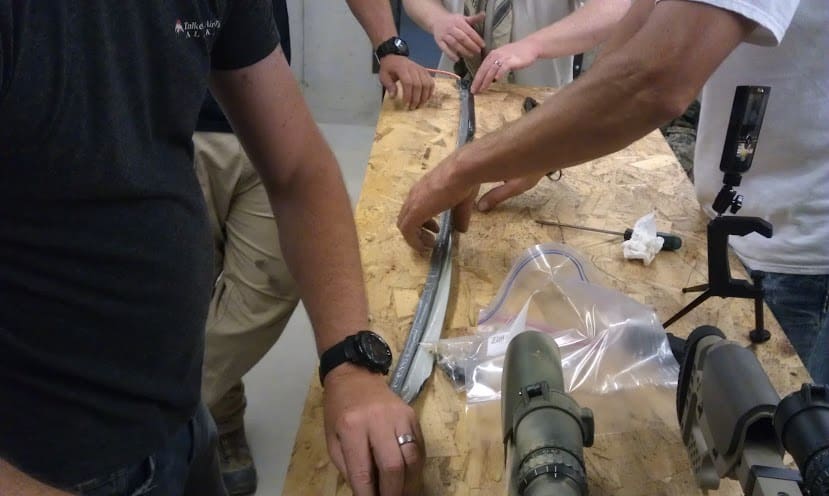
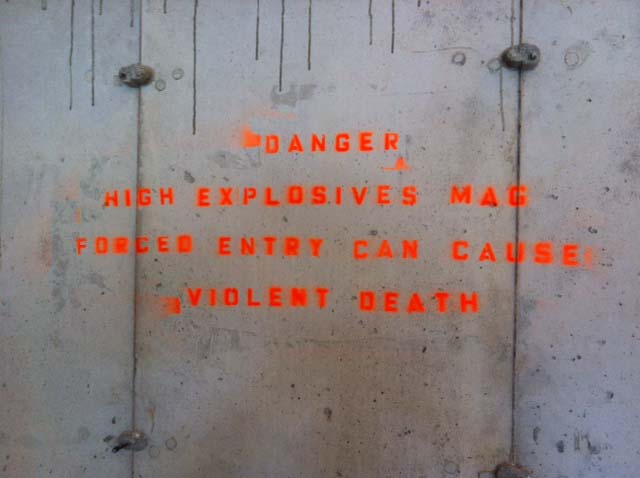



Glad you guys had a great time, Tim. I knew you would love it.
Just a minor correction: Aysmmetric Solutions is on 2,600 acres, not 1,500.
Wishing you guys hadn’t cancelled the class in June b/c of the damn flooding . . . I need to reschedule.
Awesome write-up. Jealous one of these don’t exist in my neck of the woods!
Good read Tim. Thanks.
Good Article. I concur with the author’s initial fears, I took their basics of tactical shooting class a while back and was hesitant that even though it was a :basics” class that it was going to be over my head or more than I could physically handle. Everything was great, instructors were top notch and patient with ALL skill levels and I learned several things that are simple and effective that I had never seen before.
I will definitely be taking another class or two as budget allows!
Very cool thanks for sharing.
PS. I did my Wrecker Op. Training at Fort Lost in the Woods! I still have all the ringworm scarring from being in stagnant water for 2 weeks up to my chest. Thanks, Uncle Sam.
You must have been fording a backwater of the Roubidoux river.
Only about 10 miles from my house. I no longer have much of an excuse not to do something like this.
Only ten miles? Yowzers, give the Asymmetric Folks a call and they’ll show you around.
Nice work, Tim! FYI, we both have the same EDC. except that my S&W 40c doesn’t have a name. But if it did, it would be Lucille.
the S&W model 65-6 .357 is named JED. Stands for Jesus Education Device. All you have to do is hold freeze, scream out for Christ, and wait for the flash and personal introduction. 🙂
Alas, Carmen is not my EDC, too much of a brick. The DB9 is with me everywhere it is lawful to carry. Our first firearm in years was a Charles Daly “Police Defender” which we named “Miranda”, the racking of the action being about the only Miranda warning a bad guy would get. The S&W .40 was the next gun we bought, and Carmen (as in “Carmen Miranda”) seemed natural.
I don’t think much of Assymetric’s hiring policies.
Not fair to toss that out there without an explanation…
Here: http://bearingarms.com/troy-asymmetric-defends-hire-of-ruby-ridge-sniper/
Are you serious that you are unaware of this?
Yikes, we’ve already covered this for “Vicki” elsewhere.
“She” is confusing TROY ASYMMETRIC with Asymmetric Solutions USA in Farmington, Missouri.
Two different groups.
This is the second time she has done this on TTAG.
Are YOU serious? About 2 seconds of research on Google could have saved you from looking silly.
Vicki – It really pisses me off that you come to my story and post a load of crap about people that I have come to know and appreciate. I am sure you are smart enough to figure out the difference between Troy Asymmetric and Asymmetric solutions, but you didn’t take the time to check.
Shame on you.
Vicky:
Respectfully the “shoot first ask questions later” methodology you are using here is what got your namesake killed.
Please try to do a bit more investigating or understanding your point before you put things into print.
We are Asymmetric Solutions, a Missouri based training company that is mostly staffed by former military special operations personnel.
You are referring to Troy Asymmetric, a Massachusetts based training division of Troy Industries that is primarily staffed by former law enforcement personnel.
We have never hired anyone involved in any way with the Ruby Ridge Incident.
Other than the fact that we share the name Asymmetric in some form we have absolutely nothing to do with these individuals. What you have done here is similar to accusing Tim McNabb of blowing up buildings in Oklahoma City because you read a story about Tim McVeigh.
Stop Think Observe Plan then Execute.
Asymmetric Solutions
For the record, I have no connection with Tim McVeigh. Or Donovan McNabb.
My Google profile is going to love this.
I want to do this kind of training so bad. Some day when I have the funds, I’m going to take some serious vacation time and immerse myself in these awesome classes.
Thanks for the writeup. I love it when yall talk about different courses with different schools. I really hope to be able to go to a couple sometime. Just have to find time. Keep these types of articles coming.
Tim, I heard a rumor that the real highlight of the day was watching me roll out of the little car during the car-jacking/ambushing drill.
: )
I am sure we were neck and neck in the awkward as hell-lympics.
Don’t sell yourselves short guys. Effectiveness rules over style any day of the week. None of the bad guys lived to critique your vehicle exit style and that is the only part of it that matters.
Asymmetric Solutions
Someday, maybe, Hollywood will show the hero as clumsy, awkward, and effective.
Thaknks for bringing attention to these guys. I’ve taken 3 courses from Asymmetric and several from other tactical schools. This place is head and shoulders above Frontsight and Blackwater. My instructors at Asymmetric included the former team leader for the DSS protection detail to the Ambassador to Iraq, an 11year Delta Operator and Adam Hammon who did both the New Zealand and British SAS. I got to do one police class at the Potosi range which was amazing. The Farmington range is incredible as well.
Great instructors but I’ve had a couple of bad experiences with them. Please see my Facebook post about my experience with them: https://www.facebook.com/MiamiMMA/posts/10216447058435774
Comments are closed.